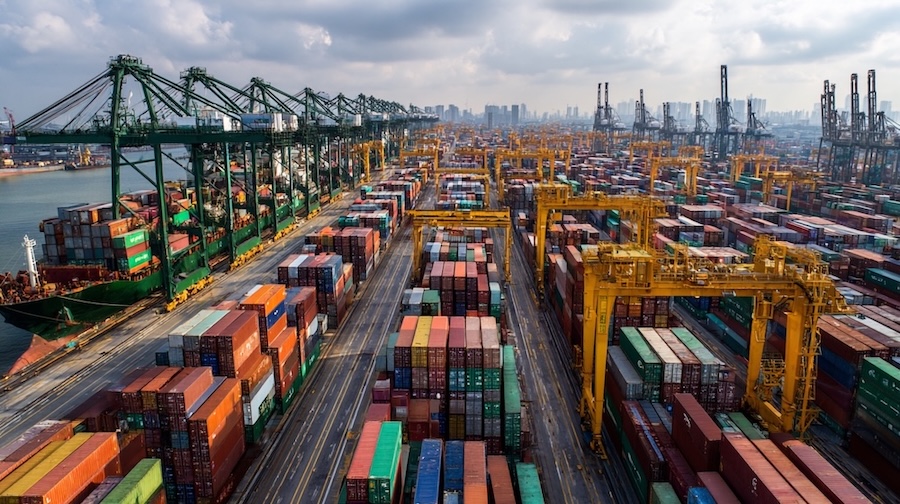Following the US tariff announcement on July 31, 2025, Vietnam is actively pursuing a favorable trade deal with the US by implementing reforms and enhancing its trade network, while also advocating for recognition as a market economy to alleviate high anti-dumping duties.
Through Official Telegram 133/CD-TTg (“OT 133”), dated August 12, 2025, Vietnam’s Prime Minister Pham Minh Chinh has instructed a number of ministries and state agencies on key priorities to achieve economic growth targets in 2025, especially in response to the new tariff rates imposed by the US.
Besides maintaining communication with the US counterpart, Vietnam’s government also aims to enhance its responsiveness through building self-resilience with a more diverse trade network.
Tariff talks: Vietnam maintains negotiation efforts with the US
As per the Vietnamese Prime Minister’s latest instructions, the Ministry of Industry and Trade (MoIT) will oversee the continuation of trade dialogue with the US. The main goal of this effort is to secure the most favorable deal for Vietnam through a comprehensive trade agreement that ensures more balanced, sustainable Vietnam-US trade and economic relations.
MoIT will coordinate with relevant agencies to quickly implement the agreements signed by both sides and provide guidance to the public and businesses directly impacted by the US reciprocal tariff rates on Vietnam’s exports and related issues.
Vietnam pushes self-resilience in the face of US tariff pressure
To mitigate the potential adverse effects of rapidly changing tariff policies of the US, Vietnam is stepping up efforts to restructure its manufacturing sector while advancing sustainable development in agriculture, forestry, and fisheries. These measures aim to diversify markets, strengthen supply chains, and maintain export growth momentum through 2025.
Manufacturing: Market restructuring and supply chain diversification
The MoIT will continue to restructure key industries, prioritizing advanced technology, human resource development, and emerging sectors such as semiconductors. Industrial value-added is targeted to grow by 9.6-9.8 percent in 2025, with manufacturing expected to expand 11.2-11.5 percent.
New policy initiatives will encourage smart manufacturing and factory models, along with incentives for businesses to invest in and master core technologies. Intellectual property protection will also be strengthened.
Energy development remains a top priority for Vietnam. As per the directives, delayed power projects would be resolved by August 2025, while major LNG and wind power projects will be pushed forward. Authorities will revise regulations on direct power purchase agreements and renewable energy, with a commitment to ensuring no shortages of electricity or fuel.
Trade promotion campaigns will expand to flagship industries under the National Brand program, targeting Free Trade Agreement (FTA) and Comprehensive Economic Partnership Agreement (CEPA) partners as well as niche markets such as Halal economies, Saudi Arabia, Egypt, UAE, Brazil, and North Africa. Vietnam aims for 12 percent export growth in 2025, with a US$30 billion trade surplus.
The Ministry of Finance (MoF) will tighten customs supervision to combat smuggling and transshipment, while promoting data sharing through ASEAN and potentially the Eurasian Economic Union. The Ministry of Foreign Affairs is tasked with advancing market access commitments and raising the visibility of Vietnamese national brand products overseas.
Agro-forestry-fishery exports: Toward sustainable consumption
Vietnam’s agriculture strategy focuses on science, digitalization, product branding, and production chain development to build an eco-friendly, modern, and innovative sector. Agro-forestry-fishery exports are targeted to reach US$65 billion in 2025, supported by deeper market access in China, the Middle East, South America, Africa, and ASEAN.
Supply chain integration will be enhanced through better crop and harvest data, stronger links between farming areas and exporters, and expanded processing capacity to increase value-added. Disease prevention measures, including against African swine fever, are being prioritized. Vietnam also aims to lift the EU’s “yellow card” on Illegal, Unreported, and Unregulated (IUU) fishing through full compliance with European inspection requirements.
Green consumption will be promoted through eco-labeling and specialized trade fairs. At the same time, close monitoring of global rice markets will help exporters adapt to policy changes in key import markets.
The State Bank of Vietnam (SBV) will provide financing support for high-quality, low-emission rice production in the Mekong Delta, alongside credit packages for the broader agro-forestry-fishery sector.
What to watch with the latest discussion?
On July 21 in Hanoi, National Assembly (NA) Vice Chairman Tran Quang Phuong met with US Ambassador Marc E. Knapper following the recent preliminary trade deal between the two countries. The agreement will see the US reduce reciprocal tariffs on many Vietnamese exports, while both sides continue addressing structural challenges in bilateral trade.
Ambassador Knapper reaffirmed Washington’s commitment to fully implementing the two countries’ Comprehensive Strategic Partnership. He noted that American businesses are encouraged by Vietnam’s recent legislative reforms, particularly those aimed at the digital economy and high-tech infrastructure.
Meanwhile, Vietnam’s NA Vice Chairman stressed that law reform and digital transformation remain top priorities to support businesses and improve transparency. He called on the US to strengthen technology transfer, promote high-tech investment, and help Vietnam become a regional semiconductor hub.
A long-standing issue raised during the negotiations was Vietnam’s push for recognition as a market economy, which would end the high anti-dumping duties currently applied under its non-market economy status. Vietnam has filed a formal request with the US Department of Commerce, citing recent reforms. Removal from the D1 (national security) and D3 (chemical/biological controls) strategic export control lists was also requested, which would encourage technology transfer to deepen bilateral cooperation.
Vietnamese leaders have consistently pressed this issue in high-level meetings. They argue that recognition would not only support Vietnamese exporters but also benefit US consumers by diversifying supply chains and lowering costs.
Conclusion
Vietnam is actively working to address the challenges caused by the recent US tariff announcements by engaging in ongoing trade negotiations to secure favorable terms and strengthen its trade network. Continued dialogue also indicates the potential for further updates on new agreements and collaborations. In any case, the upcoming developments from these trade talks are worth watching.
Source: Vietnam Briefing

